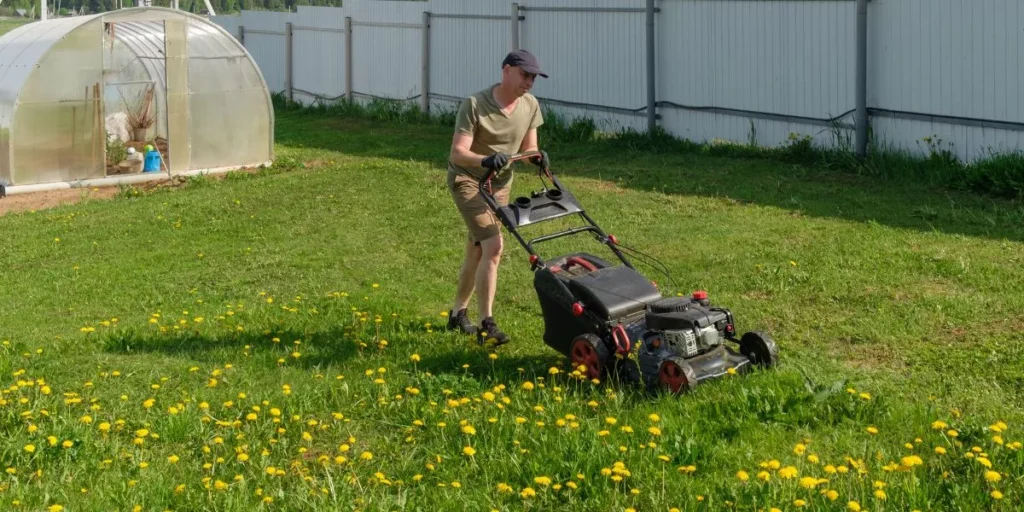
When it comes to maintaining a lush and healthy lawn, avoiding common mistakes is key. Overwatering, improper mowing, neglecting soil preparation, and ignoring weed control can hinder your lawn’s growth potential. By addressing these issues, you can create a vibrant outdoor space that enhances your home’s curb appeal. But what other factors should you consider to ensure your lawn thrives?
Overwatering
Avoid drowning your lawn by ensuring you water it appropriately based on its specific needs. Overwatering is a common mistake that many people make when caring for their lawns. It may seem counterintuitive, but too much water can actually be harmful to your grass. When you overwater, the roots of the grass can become waterlogged, leading to a lack of oxygen and ultimately causing the grass to die.
To avoid overwatering, you should first determine the specific watering needs of your lawn. Factors such as the type of grass, soil drainage, and weather conditions all play a role in how much water your lawn requires. A general rule of thumb is to water your lawn deeply but infrequently. This encourages the roots to grow deeper into the soil in search of water, making your lawn more drought-resistant in the long run.
Improper Mowing Techniques
Improper mowing techniques can harm your lawn’s health and appearance if not corrected promptly. One common mistake is cutting the grass too short. When you scalp the lawn by mowing it too low, you expose the soil to sunlight, leading to increased evaporation and potential weed growth. It’s crucial to follow the one-third rule: never trim more than one-third of the grass blade length at once to maintain a healthy lawn.
Another error is using dull mower blades. Dull blades tear the grass instead of cutting it cleanly, leaving the tips jagged and susceptible to diseases. Regularly sharpening or replacing mower blades ensures a neat cut that promotes healthy grass growth.
Additionally, mowing in the same direction every time can cause the grass to lean in one direction and create ruts in the lawn. Vary your mowing pattern to prevent compaction and promote upright grass growth for a more even look.
Neglecting Soil Preparation
Neglecting soil preparation before planting your lawn can significantly impact its overall health and growth. Proper soil preparation is essential for creating a strong foundation for your grass to thrive. Failing to address soil quality issues such as compaction, poor drainage, or nutrient deficiencies can hinder the growth of your lawn and make it more susceptible to diseases and pests.
Before planting your lawn, take the time to test your soil to determine its pH levels and nutrient content. Based on the results, you may need to amend the soil with organic matter or fertilizers to ensure optimal growing conditions for your grass. Aerating the soil can also help alleviate compaction and improve root development.
Ignoring soil preparation may lead to uneven growth, patchiness, and a weak root system. By investing time and effort into preparing your soil properly, you can set the stage for a lush and healthy lawn that will be easier to maintain in the long run.
Ignoring Weed Control
To ensure a healthy and vibrant lawn, addressing weed control is vital in maintaining the overall appearance and health of your grass. Ignoring weed control can lead to invasive weeds taking over your lawn, competing with your grass for essential nutrients, water, and sunlight. Weeds not only detract from the aesthetic appeal of your lawn but can also weaken the grass and create bare patches, leaving your lawn vulnerable to further weed infestation.
Implementing a regular weed control routine is crucial to prevent weed growth and promote a lush, green lawn. This can involve methods such as pulling weeds by hand, using herbicides selectively, or employing natural weed control techniques like mulching or overseeding. By staying proactive and consistent with your weed control efforts, you can effectively manage weed growth and maintain a healthy lawn that you can enjoy throughout the year.
Garden














